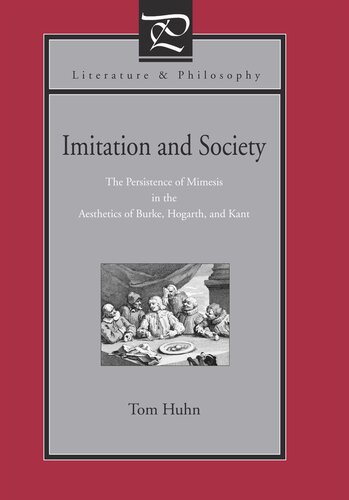

Most ebook files are in PDF format, so you can easily read them using various software such as Foxit Reader or directly on the Google Chrome browser.
Some ebook files are released by publishers in other formats such as .awz, .mobi, .epub, .fb2, etc. You may need to install specific software to read these formats on mobile/PC, such as Calibre.
Please read the tutorial at this link: https://ebookbell.com/faq
We offer FREE conversion to the popular formats you request; however, this may take some time. Therefore, right after payment, please email us, and we will try to provide the service as quickly as possible.
For some exceptional file formats or broken links (if any), please refrain from opening any disputes. Instead, email us first, and we will try to assist within a maximum of 6 hours.
EbookBell Team

4.4
62 reviewsThis book reconsiders the fate of the doctrine of mimesis in the eighteenth century. Standard accounts of the aesthetic theories of this era hold that the idea of mimesis was supplanted by the far more robust and compelling doctrines of taste and aesthetic judgment. Since the idea of mimesis was taken to apply only in the relation of art to nature, it was judged to be too limited when the focus of aesthetics changed to questions about the constitution of individual subjects in regard to taste. Tom Huhn argues that mimesis, rather than disappearing, instead became a far more pervasive idea in the eighteenth century by becoming submerged within the dynamics of the emerging accounts of judgment and taste. Mimesis also thereby became enmeshed in the ideas of sociality contained, often only implicitly, within the new accounts of aesthetic judgment.
The book proceeds by reading three of the foundational treatises in aesthetics—Burke’s Philosophical Enquiry into the Origin of Our Ideas of the Sublime and Beautiful, Hogarth’s Analysis of Beauty, and Kant’s Critique of Judgment—with an eye for discerning where arguments and analyses betray mimetic structures. Huhn attempts to explicate these books anew by arguing that they are pervaded by a mimetic dynamic. Overall, he seeks to provoke a reconsideration of eighteenth-century aesthetics that centers on its continuity with traditional notions of mimesis.